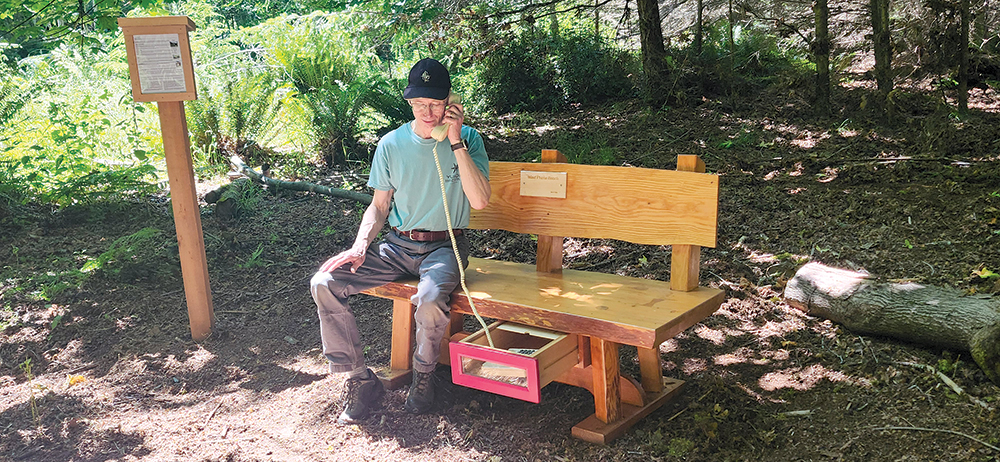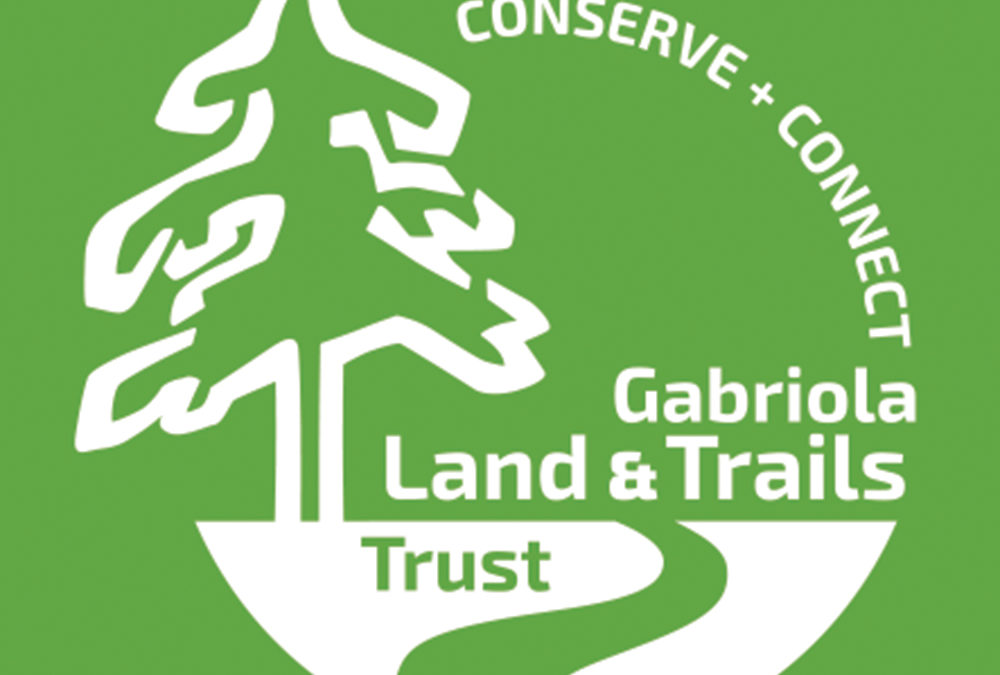
Woodworker Jamie Doig created the bench for the GaLTT Wind Phone which was installed in the 707 Community Park on Gabriola. Submitted photo
Gabriola Land and Trails Trust (GaLTT)
In 2010 Japanese garden designer Itaru Sasaki set up an old telephone booth in his garden so that he could speak to a loved cousin who had died of cancer by “talking” to him on a phone that is not connected to any “earthly system.”
The idea of wind phones as a way to process grief spread around the world, and now there’s one on Gabriola, incorporated into a resting bench created by woodworker Jamie Doig and installed by GaLTT in the 707 Community Park.
The goal of Sasaki’s wind phone was to help people reflect on loss and find comfort and healing – the idea being that if his thoughts couldn’t be relayed over a regular phone line, he wanted them to be carried on the wind.
Although the original wind phone was created in reaction to an individual loss, after the Tōhoku earthquake and tsunami in 2011 the wind phone was made publicly accessible so that grieving survivors could call family and friends who died in the disaster.
Since the original phone was installed tens of thousands of people have visited it, and hundreds of other wind phones have been built around the world, including several in Canada, one of which is in Saanich.
The wind phone on Gabriola lives in a box under a beautifully crafted resting bench made by Jamie Doig, who has donated many benches to our community, including the one that this bench will replace – the old one will be moved to a new location.
A small signboard beside the bench explains the context and purpose of the wind phone.
GaLTT members are hopeful that the wind phone can help those who are grieving in a way to find peace.
It is located on the Jeanette Trail (approximately 300m from the trailhead) where it sits under a large bigleaf maple tree, one of the most accessible trail locations on Gabriola.
While the trail is relatively flat for most of the distance to the bench, the final 100m does rise up. There are stumps along the trail for people who have mobility issues to stop and have a rest.
Here’s a quote that will go on an infosheet by the bench:
“Life is only, at most, 100 years. But death is something that goes on much longer, both for the person who has died and also for the survivors, who must find a way to feel connected to the dead. Death does not end the life. All the people who are left afterward are still figuring out what to do about it. They need a way to feel connected.”
~ Itaru Sasaki





Recent Comments